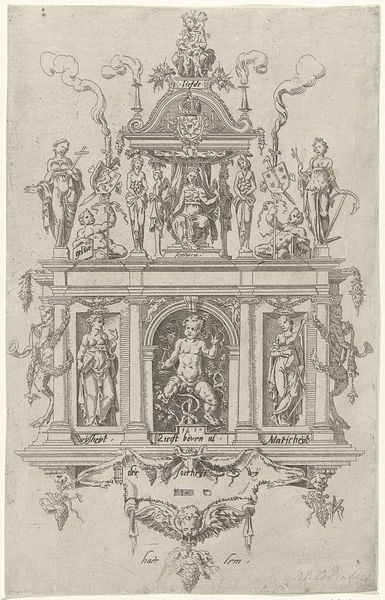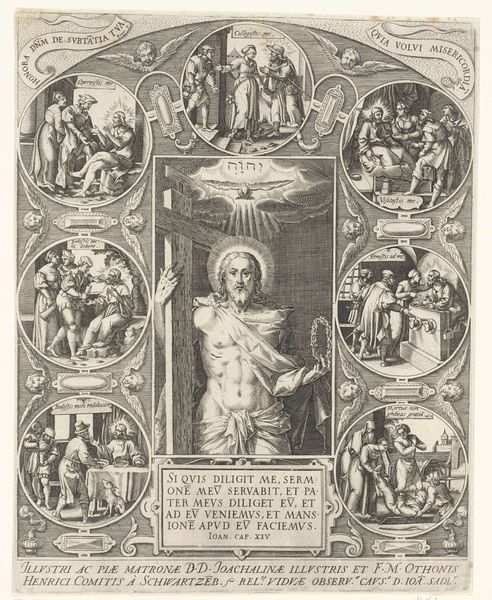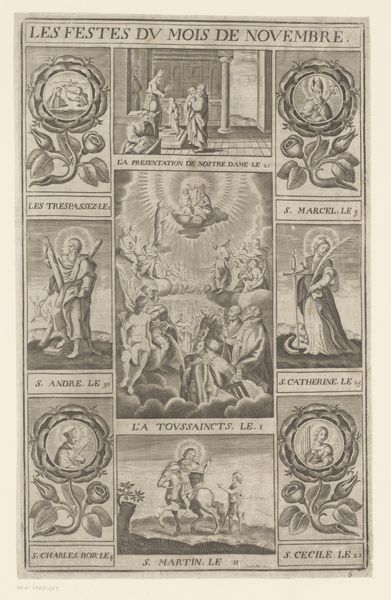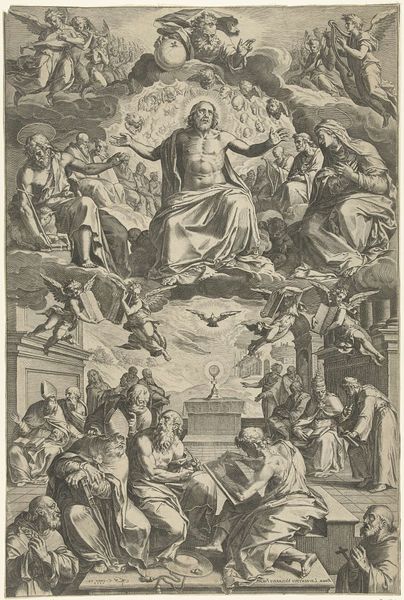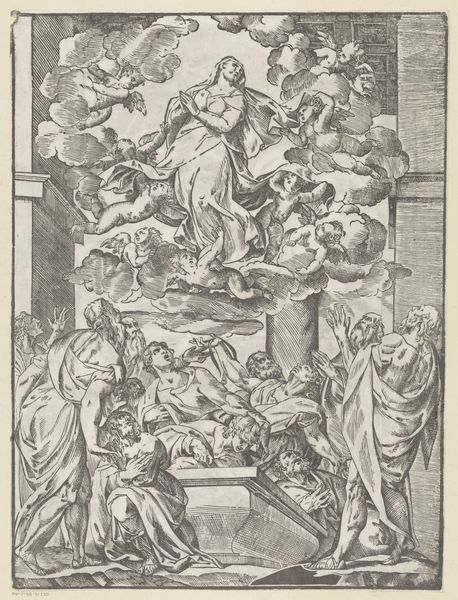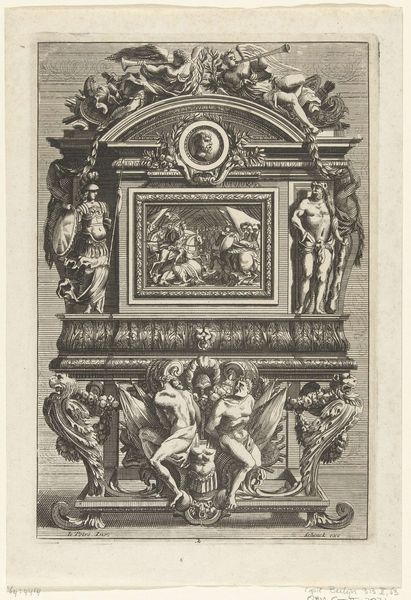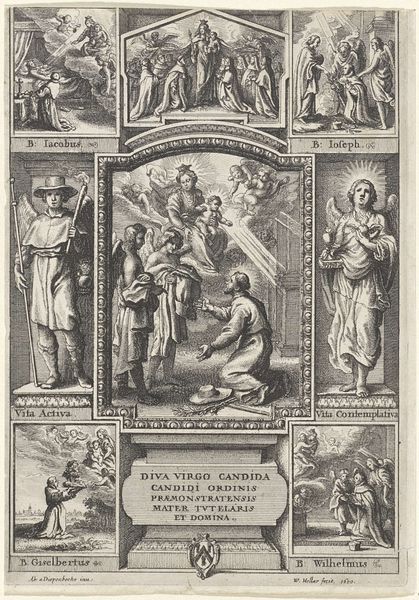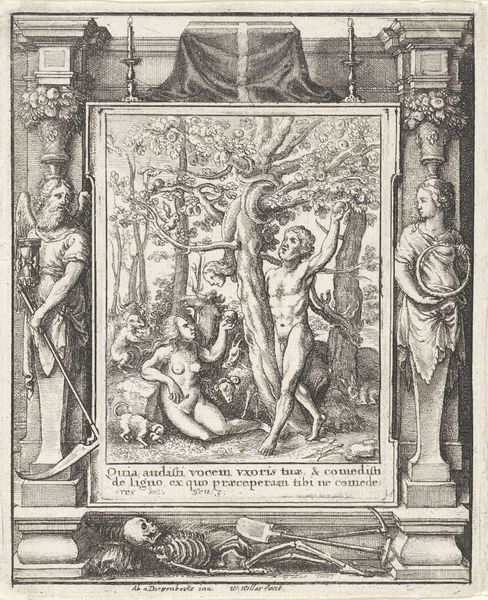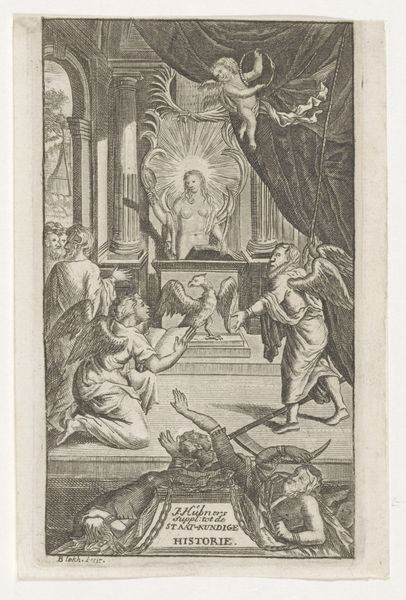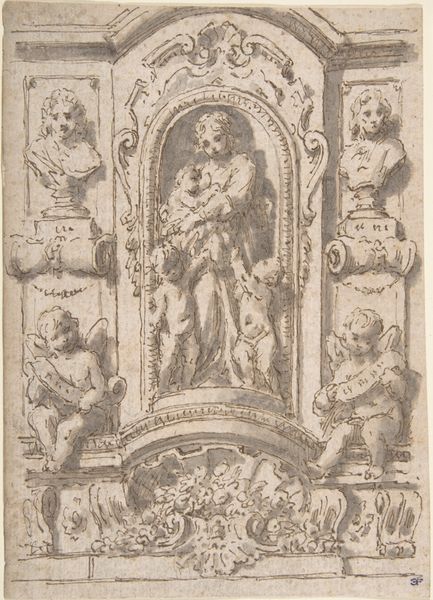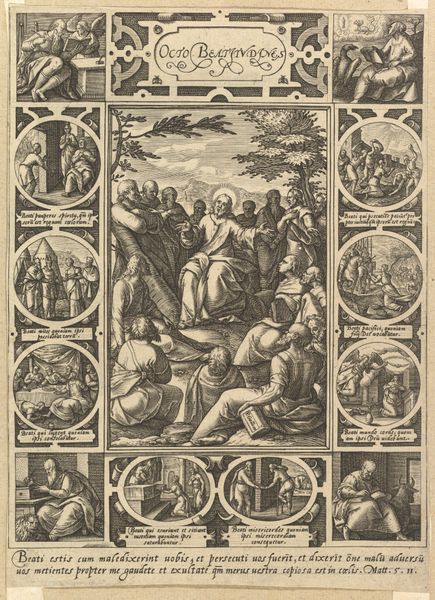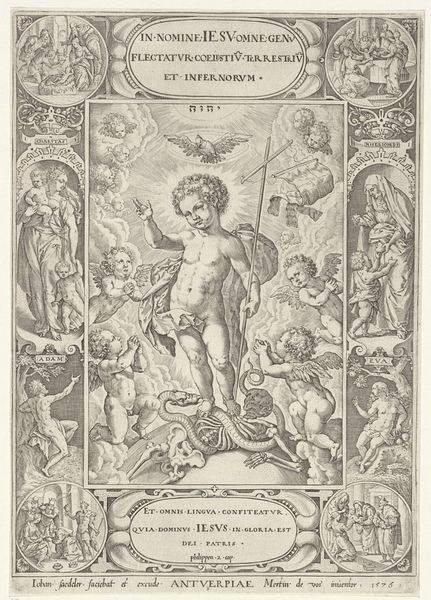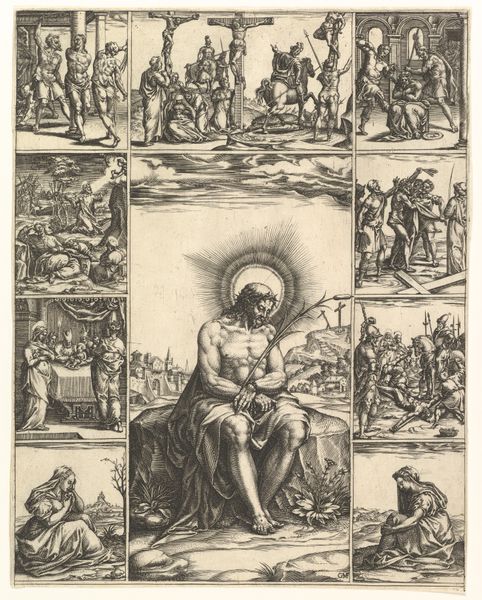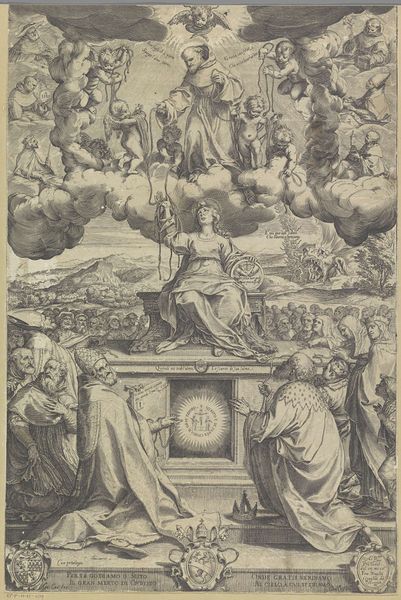
print, engraving
#
allegory
#
baroque
# print
#
figuration
#
line
#
history-painting
#
engraving
Dimensions: height 295 mm, width 216 mm
Copyright: Rijks Museum: Open Domain
Curator: Here we have "Pietà, surrounded by the Instruments of the Passion," an engraving by Johann Sadeler I, dating roughly from 1580 to 1600. Editor: It strikes me as incredibly ornate, almost overloaded. The central scene is, of course, the Pietà, but it’s framed by all these smaller vignettes. There’s so much to visually process. Curator: Indeed. The composition reflects the period's fascination with allegory. It’s less about straightforward depiction, and more about layering meanings and symbols related to Christ's suffering. The "Instruments of the Passion," or arma Christi, reference specific elements of his ordeal. Editor: Speaking of instruments, the means of producing this elaborate image intrigues me. It’s an engraving, so that would require meticulous work with metal tools to create the plate from which the prints are made. It is itself laborious, mirroring perhaps the labor Christ performed during his life on earth. Curator: I see what you're getting at. And look closer, the details extend to the clothing folds and musculature, creating an image imbued with a sense of sorrow and loss. One might read the framing as reflecting how such an event might have touched other subjects who experienced marginalization. Editor: Absolutely, that central Pietà— the Virgin cradling Christ, that’s a common image. However, it’s been carefully placed within a larger commercial project of circulating iconography. It shows how suffering can be marketable, replicable. And if Christ is performing salvation for laborers everywhere, does this imagery provide solace, or further subjugate them through spiritual dependence? Curator: I think the dialogue between solace and exploitation you mentioned reflects an awareness present in the art of the period, revealing both societal contradictions. This artwork makes an historical event available and also provides multiple opportunities for different audiences. Editor: Well, after diving into all this intricate symbolism and technique, I appreciate how such engravings weren't simply about religious devotion, but about skillful manufacture and economic systems that allowed a dissemination of religious beliefs for mass appeal. Curator: Indeed, viewing this Pietà within its matrix reminds us that religious and artistic output is both individual and collective; it impacts, and is impacted by the culture in which it was made and is received.
Comments
No comments
Be the first to comment and join the conversation on the ultimate creative platform.
